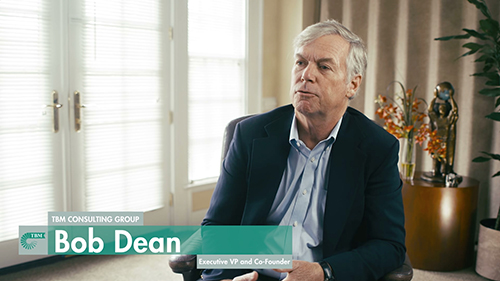Restart Your Stalled Continuous Improvement Efforts by Creating a True Culture of Improvement
We have visited and assessed countless operations where their continuous improvement efforts have stalled. There are many contributing factors, but one stands out in almost every case: The failure of senior business leaders to stay engaged. We understand that there are always people and issues clamoring for your attention. And we know that deeper leadership engagement and commitment are frequently thrown out as a panacea for every business or management challenge. But for an improvement program to continue to deliver meaningful returns after the first couple of years, it has to become part of your company’s culture, and that always starts at the top.
Culture describes the behaviors and beliefs of a group or organization. It’s reflected by how people perform and act every day, how they communicate and how they solve problems. A traditional management culture, for example, is characterized by hierarchy and a tendency to push problem-solving upward from the workers on the floor to supervisors, from supervisors to department managers, and so on. Managers’ distance from the issues often makes it difficult and time-consuming to pinpoint root causes, which is why the same issues tend to keep popping up over and over again.
In contrast, a continuous improvement culture builds the problem-solving capabilities of employees at all levels and gives them more leeway and responsibility for finding solutions. This enables the company to respond to and resolve issues faster when they arise. It also reinforces an anti-complacency mindset, or what Jason Farver, Senior Vice President at VT Industries, describes as a “healthy disgust for the status quo.”
Beyond annual cost savings, there are several other financial reasons for executives to engage with – and thereby reinforce the importance of – the company’s continuous improvement efforts.
- First, a culture of improvement makes a company much more adaptable. Responsiveness is critical in today’s economically volatile environment. Because people have the tools and are empowered to respond to issues and opportunities, they’re more willing to embrace change, which allows your company to respond faster to market changes.
- Second, having more responsibility, being involved in decision-making, and challenging work, are all classic promoters of higher job satisfaction. It follows that people who are engaged in their work, and in the process of improving it, would create a more energizing and rewarding place to work. Leadership involvement in creating a culture of improvement therefore directly supports efforts to attract and keep the most talented people.
Take a loot to the complete video.
In the next blog post on this topic, we’ll look at how to know when your CI efforts are achieving their full potential, and the first step management can take when they’re not. For more information on restarting a stalled CI program, download a copy of our newest management briefing, “Has Your CI Program Gone from the Five Whys to Why Bother?”





